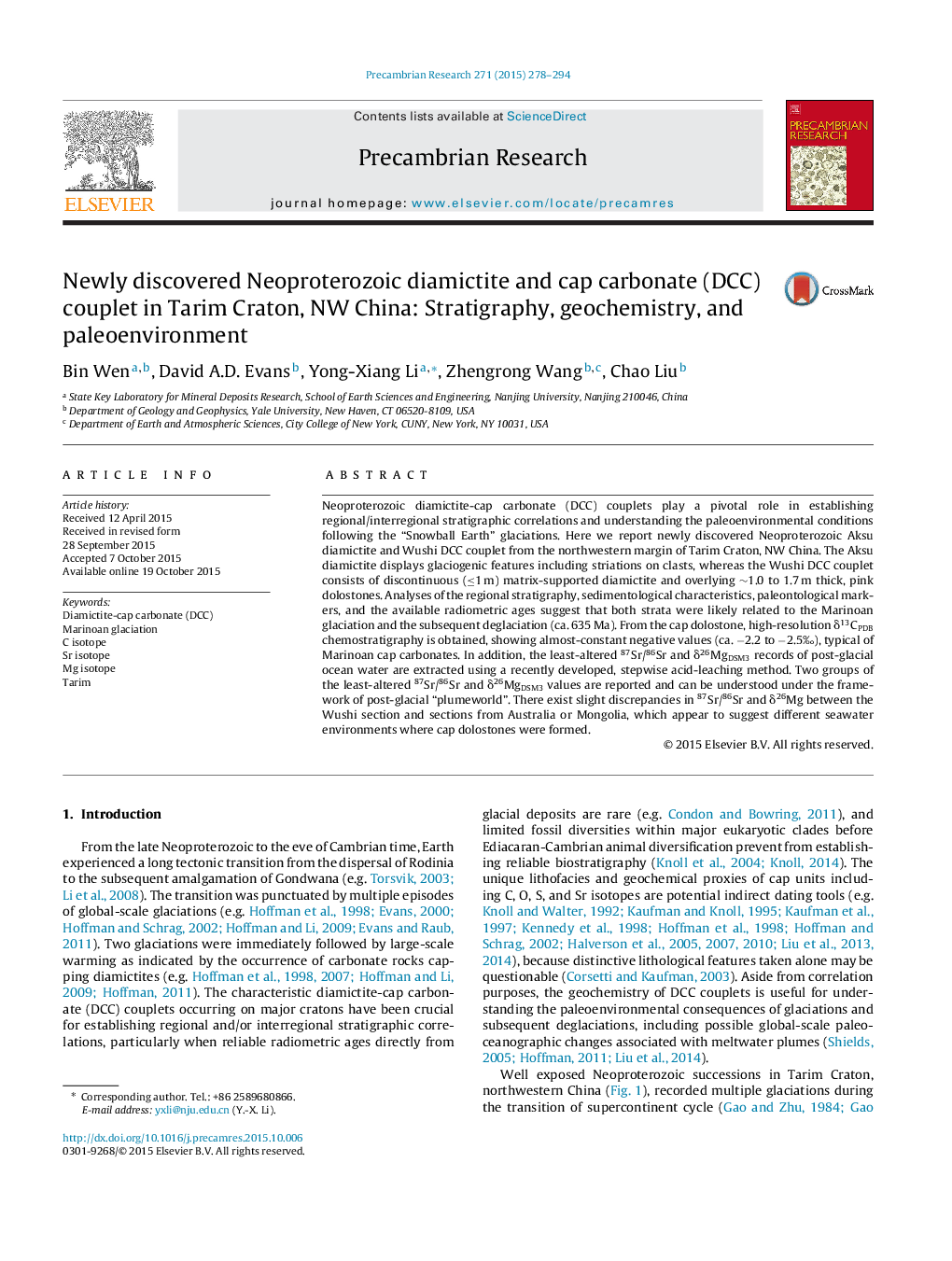| کد مقاله | کد نشریه | سال انتشار | مقاله انگلیسی | نسخه تمام متن |
|---|---|---|---|---|
| 4722490 | 1639604 | 2015 | 17 صفحه PDF | دانلود رایگان |

• Newly discovered Neoproterozoic diamictite and cap carbonate (DCC) couplet in Tarim is reported.
• Litho- and chemo-stratigraphic correlations suggest that the DCC couplet is likely of Marinoan age.
• The least-altered Sr and Mg isotopes suggest a different water plume in the post-glacial ocean.
Neoproterozoic diamictite-cap carbonate (DCC) couplets play a pivotal role in establishing regional/interregional stratigraphic correlations and understanding the paleoenvironmental conditions following the “Snowball Earth” glaciations. Here we report newly discovered Neoproterozoic Aksu diamictite and Wushi DCC couplet from the northwestern margin of Tarim Craton, NW China. The Aksu diamictite displays glaciogenic features including striations on clasts, whereas the Wushi DCC couplet consists of discontinuous (≤1 m) matrix-supported diamictite and overlying ∼1.0 to 1.7 m thick, pink dolostones. Analyses of the regional stratigraphy, sedimentological characteristics, paleontological markers, and the available radiometric ages suggest that both strata were likely related to the Marinoan glaciation and the subsequent deglaciation (ca. 635 Ma). From the cap dolostone, high-resolution δ13CPDB chemostratigraphy is obtained, showing almost-constant negative values (ca. −2.2 to −2.5‰), typical of Marinoan cap carbonates. In addition, the least-altered 87Sr/86Sr and δ26MgDSM3 records of post-glacial ocean water are extracted using a recently developed, stepwise acid-leaching method. Two groups of the least-altered 87Sr/86Sr and δ26MgDSM3 values are reported and can be understood under the framework of post-glacial “plumeworld”. There exist slight discrepancies in 87Sr/86Sr and δ26Mg between the Wushi section and sections from Australia or Mongolia, which appear to suggest different seawater environments where cap dolostones were formed.
Journal: Precambrian Research - Volume 271, December 2015, Pages 278–294